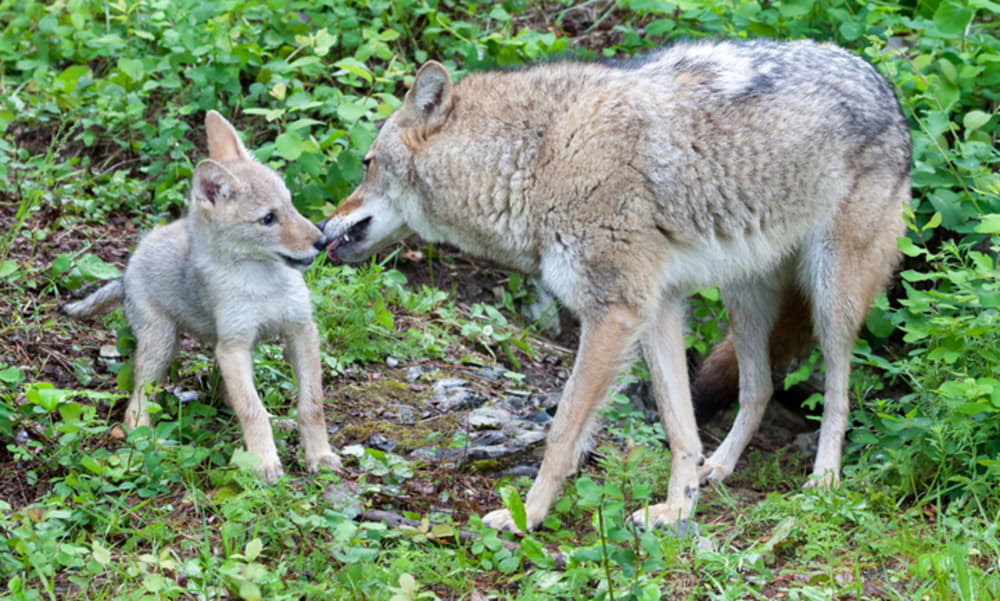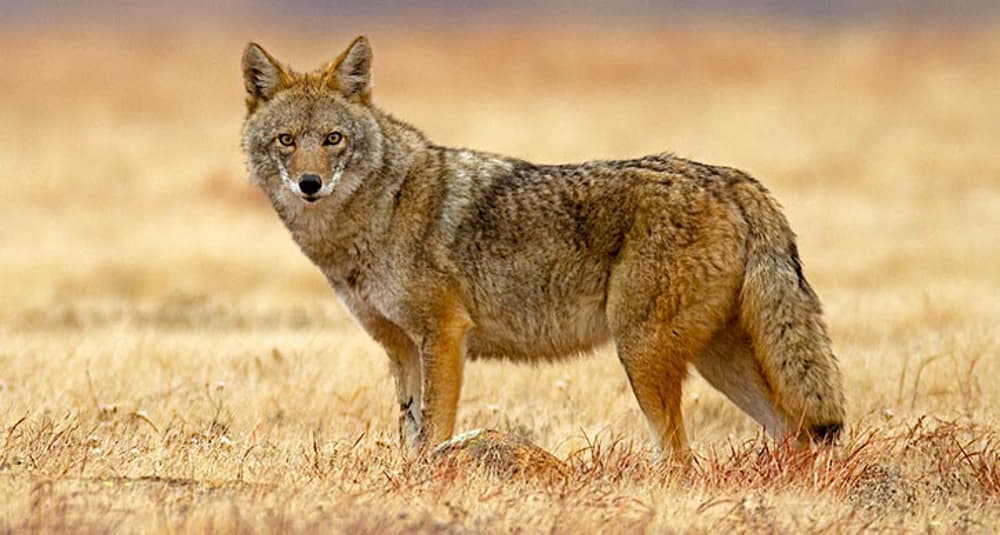If you’ve ever wondered about the time behaviors of coyotes, especially when they venture out at night, you’ve come to the correct place. Coyotes are noted for their adaptability and resourcefulness. Being active during the dark hours is part of their incredible survival strategy. So, what time do coyotes come out at night?
Coyotes are nocturnal creatures, which means they are most active at night. Their particular activity patterns, however, might vary based on factors such as location, season, and availability of prey.
While there is no set universal time when coyotes come out at night, they are most active during the twilight hours. These are the times just before and following sunrise and sunset. They participate in hunting, foraging, and territorial actions during these times.
We will go deeper and shed light on coyotes’ nocturnal activities in this article. So, let us begin on this adventure and discover when coyotes emerge into the night.
Table of Contents
What Time Do Coyotes Come Out At Night?
When the sun goes down and darkness falls, a new chapter begins for the cunning and elusive coyote. These sophisticated coyotes, known for their agility and stealth. They are predominantly nocturnal species that thrive at night. While coyotes do exhibit some crepuscular behavior (active during twilight), they truly come alive while the rest of the world sleeps.
The actual moment at which coyotes appear at night can vary depending on a number of factors. Location is important because coyote populations in urban areas may change their behavior to avoid human activity. They tend to follow a more natural pattern in more rural locations. Seasonal variations also can have an impact on their nocturnal habits.

Coyotes typically begin their nocturnal activity just after sunset. They continue their activities throughout the night, with peak activity occurring around midnight. As the night draws closer, they walk out in search of food.
Coyotes are scavengers and hunters who take advantage of opportunities. They eat a wide variety of foods, including small mammals, birds, reptiles, insects, fruits, and even carrion. Their hunting methods are as diverse as their diet, ranging from lonely endeavors to collaborative efforts when pursuing larger prey.
Coyotes participate in a variety of vital survival actions during the night. They patrol their areas, marking boundaries with their characteristic yips, howls, and yelps. These vocalizations serve a variety of functions, including communication with other coyotes and warning possible intruders.
Coyotes may also be active briefly before sunrise. This habit enables them to take advantage of the transitional period between night and day. This increases their chances of locating food while decreasing their contacts with diurnal predators.
The Influence Of Seasonal Variations
Coyote behavior varies slightly depending on the season. They may be less active on extremely cold nights in colder regions where winters are harsh. Coyotes, on the other hand, maintain rather similar activity patterns year-round in warmer climes, such as temperate zones.
During the breeding season, which typically occurs between late December and March, coyotes may alter their behavior slightly. Males become more active and vocalize to attract mates. This causes an upsurge in nocturnal activity during this time.
Other seasonal factors like temperature, weather conditions, and the availability of vegetation play a role in coyote behavior. During extreme weather conditions, such as heavy rainfall or snowstorms, coyotes may reduce their activity levels temporarily.
Factors Affecting Coyote Activity
While crepuscular activity is the general pattern for coyotes, several factors can influence their specific activity levels. Here are some key factors that may affect when and how often coyotes come out at night:
Food Availability
Coyotes are opportunistic hunters who eat a wide variety of prey, including small mammals, birds, insects, fruits, and even carrion. The availability of food sources has a significant impact on their activity habits. Coyotes may change their pattern if there is an excess of prey or easily accessible food.
Human Disturbances
Coyotes have an amazing capacity to adapt to urban and suburban situations. However, human activities can still influence their behavior. Loud noises, frequent disturbances, or the presence of humans in their region. These might cause them to alter their schedules and become more cautious about venturing out.
Predation Pressure
Coyote behavior can be influenced by the presence of larger predators in a region. They are more active when larger predators such as wolves or cougars are less active. This permits them to reduce potential confrontations and resource competition.
What Time Of The Year Are Coyotes Most Aggressive?
There is no doubt that coyotes are hazardous. Coyote attacks are well-known. This is one of the reasons why so many people want to know how to keep coyotes away from their property.

The good news is that attacks are less common than frightening tales would have you assume. Coyotes don’t want anything to do with humans. They purposefully avoid us and modify their entire lifestyle to avoid problems. They are terrified of humans and would prefer to flee than stand their ground.
Aggressive behavior is more common during the bredding season. Mothers passionately protect their children. Because the young coyotes are unable to protect themselves, the mother assumes that responsibility.
The denning season lasts from February until June. That is when the mothers nest. New mothers are also actively nursing, which adds to their vulnerability. It’s critical to be extra careful about approaching coyotes at that time of year. Because their dread is at an all-time high, attacks are significantly more likely.
When Do Coyotes Sleep?
The time a coyote sleeps depends on the environment it finds itself. Coyotes that dwell in or near human settlements sleep during the day to avoid contact with humans. Then they come out at night to forage for food.
Coyotes that dwell in areas with little or no human population sleep at night and are active during the day. However, because all coyotes have different sleeping habits, it is impossible to forecast.
A coyote will sleep anywhere as long as it is secure, which might be in a variety of situations. The den or sleeping area of a coyote depends on its environment. Tree hollows, rock outcrops, and coyotes’ dens are some of the most typical places a coyote may sleep.
Conclusion
In conclusion, coyotes tend to become more active in the evening as darkness sets in, their peak activity occurs around midnight. However, it’s crucial to keep in mind that a variety of conditions can have an impact on coyote behavior. Food accessibility, human disturbances, seasonal fluctuations, and predation pressure are among the factors. Understanding the timing of coyote activity can be helpful for humans. Especially those living in areas where human-coyote interactions are possible.

